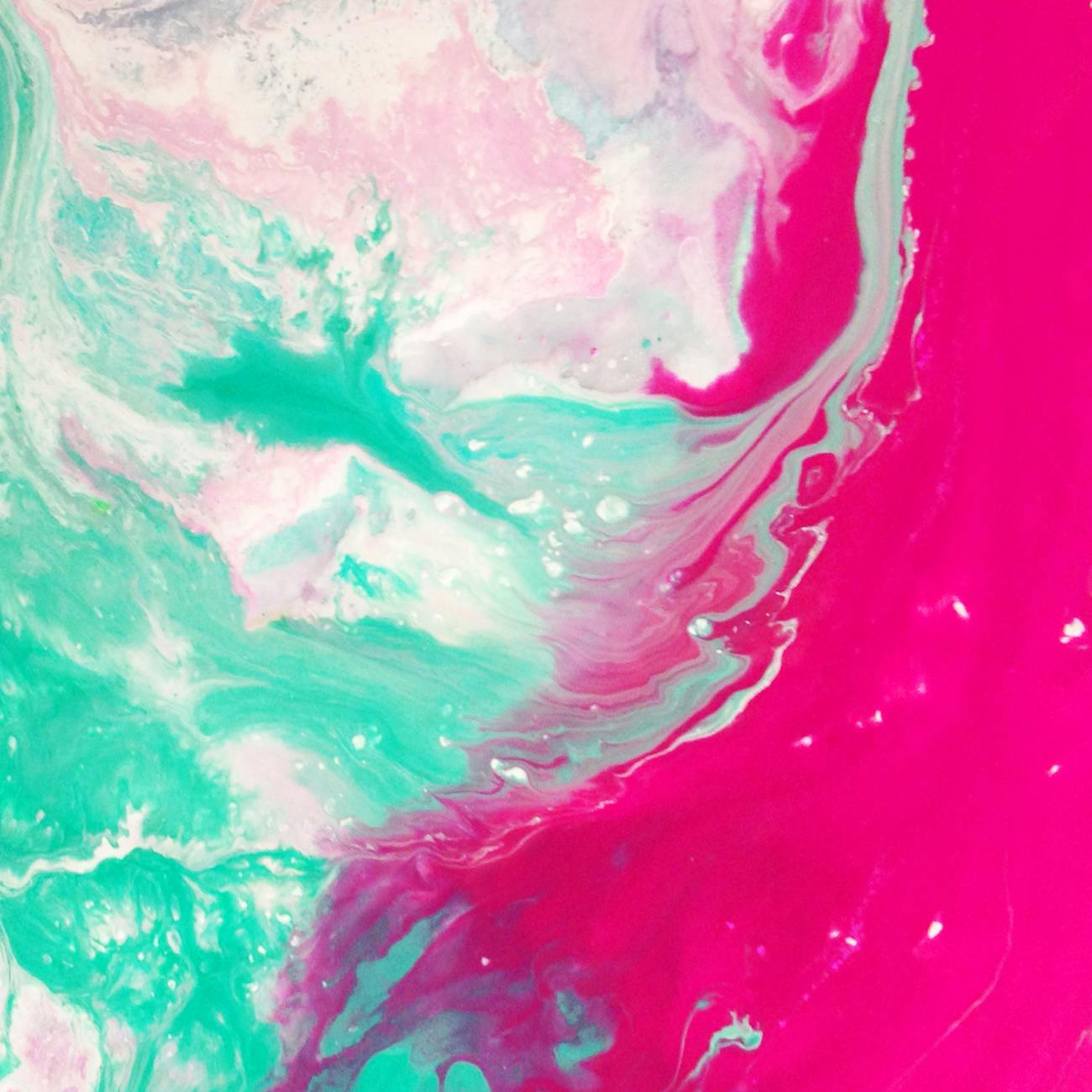Your basket is currently empty!
Tag: blog

Photography 101: Sports in the Rain
A challenge for all outside photographers: Sports in the rain.
The weather at the end of the year has always been temperamental in my experience of the northern hemisphere. What may start off as a cloudless blue sky can often morph into thick grey clouds unloading a deluge of rain, hail, or even snow. In my time as a sports photographer, I often see other photographers run and take cover during the rain and cover their equipment, while I am out there with my camera and lens facing the precipitation without so much of batting an eyelid. Of course, I know electricity and water do not mix, but surely a camera costing over a grand would withstand more than sunshine? That’s where the weatherproof, waterproof argument comes in.
Personally, I love the challenge of shooting in the rain. The amount of drama that can be captured through the motion of water, not just falling but from the splash effect of mud and puddles. Some of my favourite shots are from unexpectedly rainy days, including my last snapshot post here.
This post covers all the things I wish I knew before I started taking pictures in the rain, as well as some tips and tricks on equipment and settings!

Canon6Dii with 150-600mm Sigma lens 1/800 f/6,0 ISO 2000
What is Weatherproof?
Typically, a weatherproof camera has a number of seals around any points of dust and water incursion, which protect it against rain or splashes of water (rather than dropping it in a body of water). This means that a little fall of rain will rarely cause damage. However, continuous shooting in heavy rain can counteract weatherproofing.
The first thing is to know your gear. Some camera bodies are “weather resistant” and some are not. For example, the Canon 6D is not weatherproof, whereas the Canon 6Dii is. Lenses are also weather resistant so be aware that cheaper lenses may not be!
Be aware that using camera gear that is not weather-resistant can lead to water damage and other complications, such as fungus in the lens. To be sure this does not happen, regardless of your gear, make sure everything is dried out and cleaned thoroughly after the shoot.
Waterproof cameras are designed for total submersion, for people like scuba divers – so not a necessity for a sports photographer who sits out in the rain!
Extra Rain Equipment
Preparation for rainy shoots both expected and unexpected, I have found the best emergency rain gear for my set up is as follows:
Microfibre cloth – This is a game changer. You should have one of these anyway, but especially a life-saver in the rain. After getting rain in all the places, the screen, the viewfinder, and the lens, the best way to avoid smears from wiping the water away is with a quick rub with one of these beauts.
Plastic bag – These can be folded down really small, so great for packing in a corner spot. Plastic bags are waterproof, a cheap alternative to spending out on a designer Gortex camera poncho sleeve. I simply wrap the bag around the body and lens joint when in a pinch to ensure that the seal does not get broken. Be sure to remember that if you are working with horses some may find plastic bags the scariest thing out there so be mindful!
Duct Tape – Attach the bag to the camera in a more heavy-duty fashion. It is also just super handy to have on you encase equipment fails. Looking at you my non-trusty monopod!
A Wide-Brimmed hat – Handy on sunny days and rainy days. Personally, I find a baseball cap does the job for me providing extra cover between the sky and the viewfinder. I’ve encountered other photographers who use fishing hats or outback-style hats to the same degree.
Towel – This one is for you. Inevitably, you will be soaked to some degree. I wear a camera harness inside my main coat. This means when I shoot, the coat is open.
Gloves – Rain is cold. Cold hands are slow. This may be just my thing, but having gloves or some sort of hand protection during the rain can be a game-changer!

Canon6Dii with 70-200mm EOS lens 1/1000 f/4,0 ISO 1000
Sports in the Rain Tips and Tricks
One positive of shooting on consistent rainy days is not having to worry about what the sun is doing. Rainy, overcast days act like a giant soft box in terms of lighting so you don’t have to be rushing through settings to adjust to ever-changing cloud coverage and heady brightness. There are no harsh shadows either, meaning that everywhere your camera points are pretty much even. This works great for photographing people – a natural lightbox with soft shadows -works wonders to bring out the good side!
Want to capture the rain in all its glory? The trick is shutter speed. The higher the shutter speed, the better the rain will look frozen in mid-air for the photo.
Typically, I like to use a minimum shutter speed of 1/800 to capture the “splash” images. However, you do need to remember the exposure triangle, as I have mentioned in previous posts to make sure that the image comes out balanced.
A general overview of my rainy settings during the day are:
ISO limited 2000
f/4.0 – f/6.0
1/800-1/1250One of the biggest challenges to shooting in the rain is the focus. The auto-focus on your camera may jump around as it is picking up the rain between you and the subject. Especially if you are using the `AI-SERVO for capturing sports. Plan on having some out-of-focus images, especially if there is heavy rain – don’t be too critical either!
Keep your lens hood attached! This may seem logical to some, but having the lens hood on will add extra protection to the front element of your lens, meaning less fog and fewer unwanted droplets.
Another simple tip is to shoot out of the wind. What is worse than rain – rain blowing straight into your face and camera lens. If possible, find a spot that has some natural shelter from the wind and rain, or at least the wind!

Canon6Dii with 70-200mm EOS lens 1/1000 f/4,0 ISO 1000
After the Shoot
It may be very tempting to pack up, remove lenses and shove everything into your bag as soon as possible during a rainy shoot, but that is not the best idea. Keep the lens attached to the body, as the seal is still in place.
Probably the most important thing you can do when shooting in the rain is what you do after. If you have the luxury of being able to dry your camera and put it away properly, do it. If not it is best to leave the camera assembled until you have the chance to make sure it is dry.
When you have the chance to attend to your wet camera, if you have not done so already, take the camera apart and give it a full wipe-down. Use the aforementioned microfibre cloth to dry and clean the lens elements. Make sure to fully extend any telephoto lenses if it has a body that grows and shrinks as you zoom in and out to ensure dryness. If you are not sure it is 100% dry, place all your gear on a towel in a dry warm place. Do not place it near a heat source like a fire or a heat vent as these could cause other types of damage to your gear.

Canon6Dii with 150-600mm Sigma lens 1/800 f/6,0 ISO 2000
In my latest shoot, I had the misfortune of it being both rainy, windy, and bright. Meaning that I was constantly scrolling through my shutter and ISO to balance pictures. I did have the luxury of a warm cafe in between classes. Nothing beats warming up in front of a fire with ever-so-needed coffee! This did allow me to make sure all my equipment was still functioning properly. And not getting swamped throughout the day, unlike me. With the rain, setting up for where the best shots took me less time. This probably meant that I did not find the best places either. All being said, I did manage to get some dramatic puddle shots as well as some lovely jumping pictures.
The most important part of shooting in the rain is making sure you are waterproofed too. A good coat, and as I mentioned, a hat and gloves are essential, especially in the colder months. So wrap up warm, grab a coffee to go, and get out there!
Is there anything I missed? Let me know in the comments!
If you want to know more about the settings I use for my photography, have a look at my previous snapshot posts below:
I am currently taking bookings for shoots and competitions local to me. Feel free to get in touch for information!
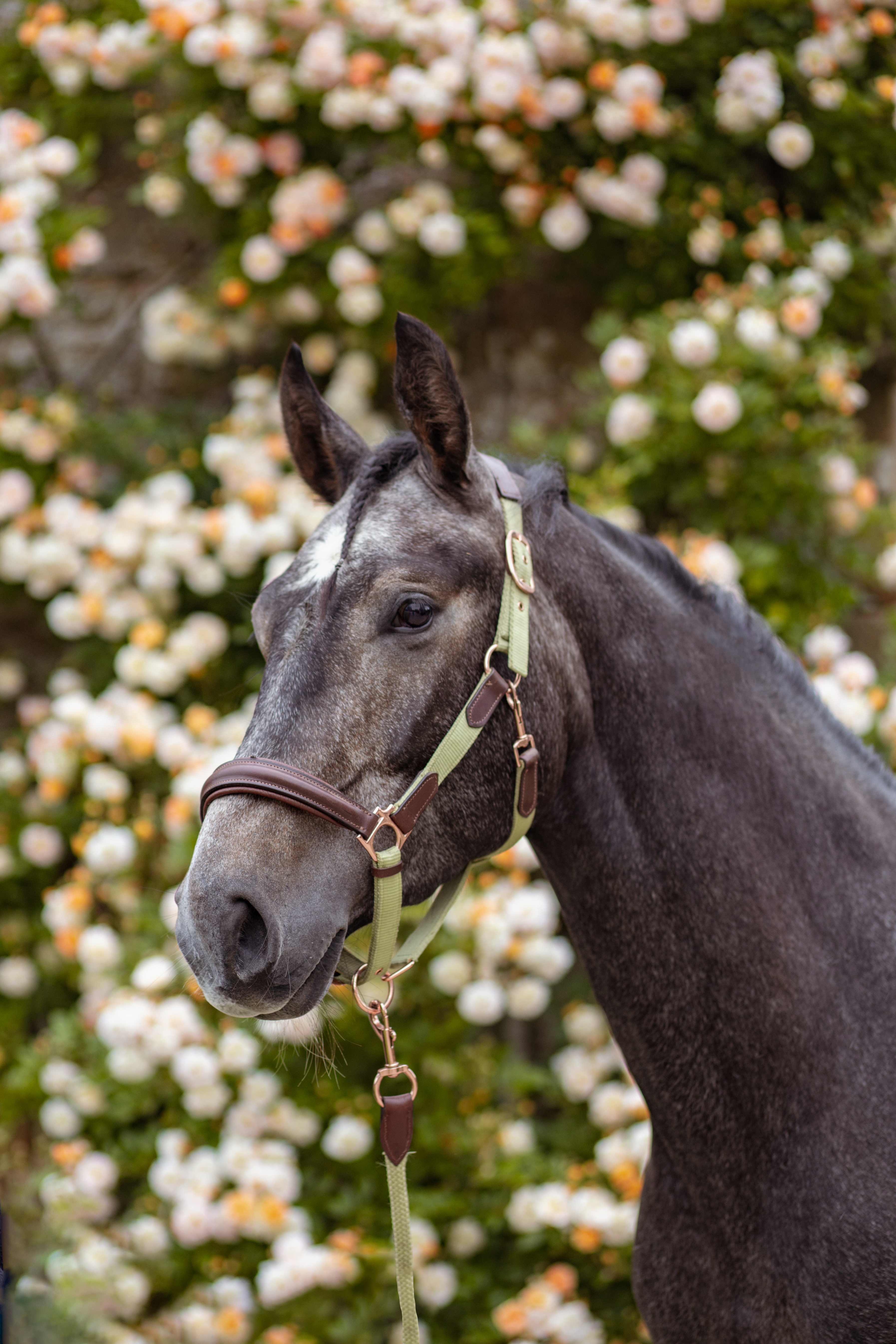
Equine Photography: Why Colour Matters
In Equine Photography, Colour Matters. In photography we are guided by the three C’s; Contrast, Composition, and colour. For portrait photographers, balancing colour to compliment skin tones is one of the main aspects, so why should equine image editing be any different?
In my last post, we cover a whole range of topics to get the basic ideas of photography. In this post, we delve a little deeper into the specifics. To truly be a master of your niche, you need to have the knowledge, as well as the experience. As a human, I am always learning. As a photographer, I am always developing style and experimenting. All artists need to branch out in order to stay inspired!
In this post:

Image of Cardhu, a bay horse. On the Left we see the original balanced photo taken on a fullframe digital camera. On the Right is the edited image focusing on the golden and red colours of the horse’s coat. Horse Colour Theory
Horse colour genetics are fascinating. We still don’t know everything to do with colour genealogy, but what we do know is already incredible. Let’s go over the basics as that’s all that we really need when it comes to Equine photography.
There are three basic coat colours. Black, Bay and Red (Chestnut). All other coat colours are from dilution genes and pattern genes, which show up in conjunction with the three basic colours. Grey horses hold a dominant trait, meaning that their colour will show through bay or red coats with one dominant gene. Whereas Red, chestnut horses are recessive meaning you need two genes to show this coat colour.
With the basic coat colours, you can get a mix of a horse appearing black with red genes, meaning in summer the horse’s mane and coat will lighten to a russet brown. A chestnut may have a slight black dilution to give them a coffee chestnut or liver chestnut coat colour.
A common dilution gene is the cream gene. The cream dilution in conjunction with the red coat leads to golden colours such as Palomino. Cream and bay create the darker buckskin with blackened points and a dark mane and tail.
Knowing about the basic coat colours and how the dilution genes work can really aid your photo editing and how to make coat colours shine in the most natural way possible.
Find out a more in-depth explanation here!

Red undertones in chestnut horses make editing a breeze. Equine Photography Colour Matters
Understanding the genetic makeup of horse coat colours can really boost your editing skills. Knowing what undertones the coats carry helps enhance the colours. Coincidently, you can flatten the colours too using traditional colour theory with complimentary colours.
Black horses can appear to be dark brown, and for owners that is a problem as they know their horse is not a bay! In removing the red tones, you can make sure your portrait shoot of a black horse stays black.


The same principle works for adding a slight tint to the subject. For Palomino coats, the genetic makeup requires a chestnut, or red base, so adding a slight red hue to the horse brings the colour out stronger. Of course, it is only a slight addition of colour. For the image below I added a 8% red overlay on the pony to deepen the palomino colour.


The same principle can be applied to grey horses too. Young grey horses are often chestnut or black in appearance or lose their colour in dapples. For black bases, a cooler tint on the coat can enhance the grey and white colour, whereas a warmer tint works well on warmer roan colouring.

Easy Editing
If you are interested in this concept but have no idea where to even start in Lightroom, I have created some coat-specific bundles, exactly for this in my store.
The store is always updating so keep an eye out for more coat specific bundles!
What is Focal Length in Photography: Understand Your Lenses
Understanding camera terminology can be intimidating. When learning about photography for the first time as a fresh 16-year-old, the whole terminology behind the camera, and sitting in a lecture about how the camera works, did nothing for me. I wanted to be out there with my DSLR taking a photo and learning on the go. Not sitting learning the intricacies of what glass was first used for lenses and how it was made! So I have taken it upon myself to keep things a bit simpler when sharing the art of photography. Onto something that baffled me for a while, focal length – what is it?
What is it?
Focal length is the basic description of a lens. It is not a measurement of the actual length of a lens, instead, it represents a calculation (in mm) of an optical distance from the point where light rays converge to form a sharp image of an object to the sensor at the focal plane in the camera. The length calculation is determined when the lens is focused at “infinity.” That’s the scientific explanation of what focal length is. But what does that mean?
Lens length tells us how much of the scene will be captured (angle of view), and how large individual elements will be (magnification):
The human eye has an equivalent focal length of 45mm.
The longer the focal length, the narrower the angle of view and the higher the magnification.

The shorter the focal length, the wider the angle of view and the lower the magnification.

Using Focal Length
It’s all well knowing what it is, but how do you use it in a practical application?

Wide Angle Lenses
Usually any lens under 50mm. These are practical for landscape photography, as well as interiors.Prime 50mm Lenses
A prime lens refers to a non-zoom/telephoto lens. It has a fixed focal length. 50mm is the closest to our eyesight. It is what most photographers use for portraits.
This image has a length of 50mm at f/1.8.

Telephoto 70-200mm Lenses
Telephoto or zoom lenses refer to lenses that can move between two focal points. A popular one is 70-200mm or 70-300mm.Super Telephoto 150-600mm
A length over the 300mm mark is popular for nature photography or sports. Personally, I used the Sigma 150-600mm for bird photography, as well as sports photography.
Finding The Focal Length
The length of your lens is marked on the front of the glass, as well as on the side of telephoto lenses. The information is stored within the metadata of your photos and available to see in editing programs, and the raw file itself.
What is it? (in Numbers)
If you want to get into the details of angles, here is a conversion of focal length to the angle of view:
Focal Length Angle of View 12mm 122° 16mm 107° 24mm 84° 35mm 63° 50mm 47° 70mm 34° 90mm 27° 100mm 24° 200mm 12° 400mm 6° It is important to remember that the angle of view can cause distortion of an image. This is why using the lens correction function is so important in editing, especially with images of people!
Now if you have any questions – feel free to comment or contact me.
For more photography posts look here.
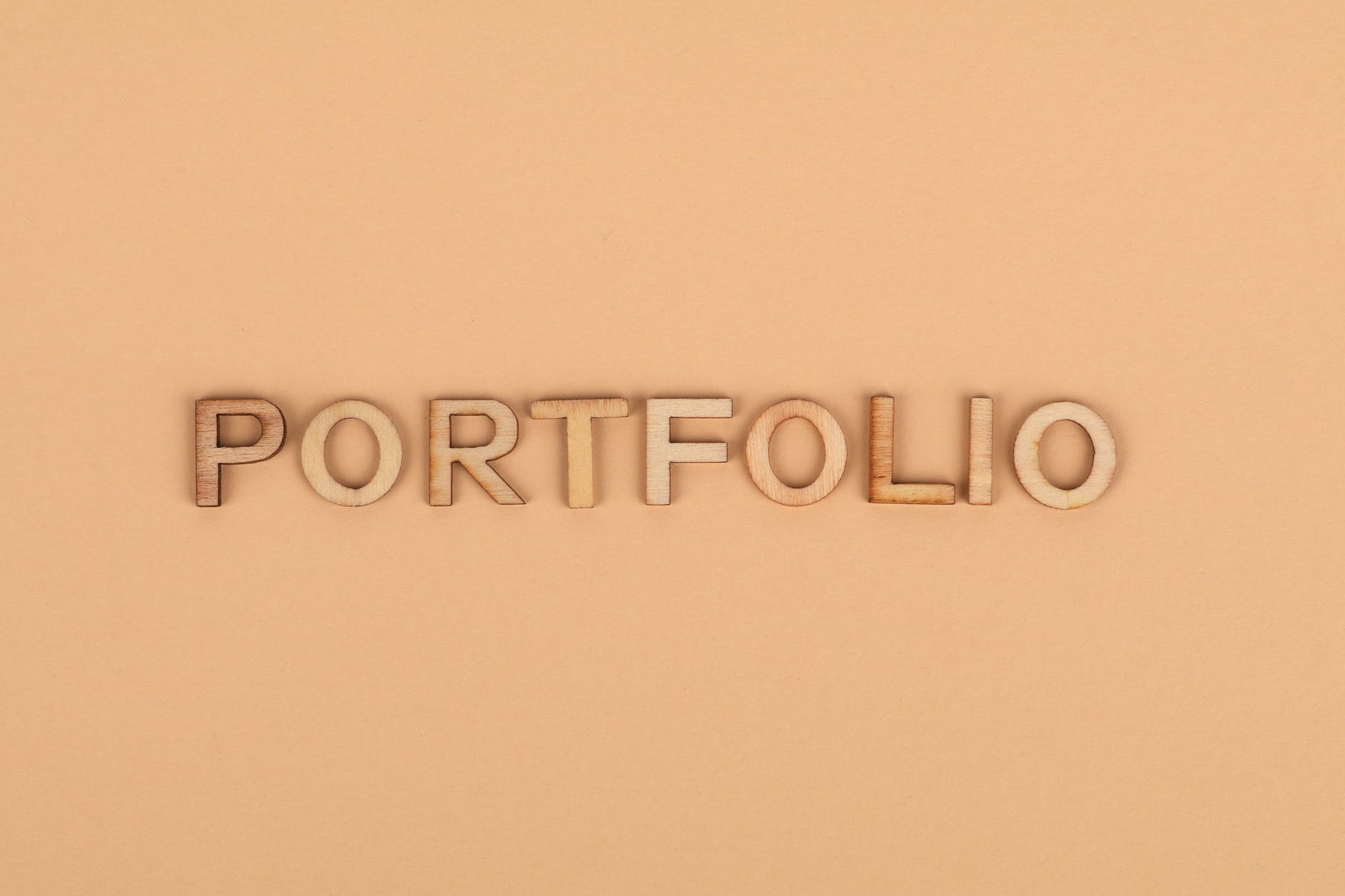
How To Build A Photography Portfolio And Attract Clients
Are you wondering how you can build a photography portfolio when you haven’t had any shooting time? Then keep reading and learn how to build a photography portfolio and attract paying clients.
Starting your new photography business can be intimidating, but it doesn’t have to be. Remember success is not an overnight thing, patience and kind words are key! That of course mixed with hard work and remembering to breathe.
Perfection may not exist, but progress certainly does. This is made with practice, which is the topic we will be covering today!
This article includes affiliate links.
How To Build A Photography Portfolio And Attract Clients
Whether it’s an online gallery, interactive PDF or an Instagram account, having a place to showcase your abilities in the art world is imperative to success. Getting a portfolio in the first place is a daunting task, but not impossible! Below are my tips to success:
Practice Makes Perfect
It’s time to put what you’ve learned into practice. All the photography basics learned from the internet, a course or friends: angles, lighting, location, communication, and posing etc. There are many things to consider as a photographer when you’re doing a photoshoot with a client.
Start off with friends and family. They know you and usually put you at ease. If you are looking to take more niche activities such as sport or wildlife, reach out to the local photographers and ask to shadow them for a day. This may be assisting on the sidelines, holding equipment such as lighting, but it is all experience and understanding on how certain shoots work.
After you’ve done a few test shoots, it’s time to practice with the public. Through this you’ll gain the experience of working with clientel, exprience the customer side of the business and also have a more varied portfolio. To get started on this, offer your services in local social media groups, or ask around!
You want a portfolio that showcases that you know what you’re doing – and the more galleries and photos you have, the better. However, it is important to remember that quality is better than quantity in this case. Only showcase work you are proud of.
Draw Inspiration From Others
Remember art class? Looking at great artists and copying works, objects and techniques? Photography is no different. There are so many fantastic photographers out there, both celebrated in art galleries and famous on instagram, but also not. Take time to scroll on Instagram, Pintrest, or your places of choice to see what works.
Here is a board of inspirational photographers I created to keep myself creative:
There are artists out there who say don’t copy others as it will stunt your individual aesthetic growth, so if you feel like that is not the route for you, don’t do it! It is your art, so do what you feel is best.
Develop Your Own Style
This is where studying other artists help. What do you like from others and what do you feel you can improve upon, or just make different. What feels like you in an image? Are you the kind of person who wants a warm cosy aesthetic? Crisp clean lines and sharp images? Intimate black and white blur?
What makes you stand out from all the other photographers? Your style, your personality, and the way you capture people and moments. Try to step outside the box of your photography comfort zone and try new settings and techniques! You may suprise yourself! By developing your own style, technique, aesthetic, and voice, you set yourself apart. People have something to remember you by, instead of being “just another photographer with pretty pictures”.
To have a consistent style once you have settled, try to use the same editing technique on the photos to keep your portfolio uniform.
Find Your Niche
Nowadays, everything is about specialising. Photography is no different. People look for specialists in their area: weddings, family portrait, sport, wildlife… you name it there is a speciality for it. Find what side you are most passionate about and hone your niche to this particular event.
However, this doesn’t mean you can’t branch out into different areas of photography. Take myself for instance. My passion is animals – in particular horses, so I focus my work on Equine photography and competitions. But I also enjoy other aspects and take bookings for portraits, product shoots, as well as enjoying taking my camera around for events.
“Your enjoyment and passion comes out int he quality of photos you take!“
Promote What You Love
If you find out you really enjoy doing sessions with couples onsite, guess what your portfolio should be based around? Couples in situe. Your enjoyment and passion comes out int he quality of photos you take!
When someone who’s looking for a couples photographer sees your portfolio, they clearly see right away what kind of photographer you are, and what you’re really good at. This allows the customer to imagine what it would be like to work with you and what product they can take away from it.
The customer really likes your style, and your work leads them to want to work with you. Or maybe they take a look at your portfolio and decide you’re not the photographer for them. In both scenarios, this is ok, because you want to attract your ideal clients and turn away the wrong ones.
Website Hosting
To get started with an online portfolio, you can use social media, or you can have a website. To help you get started WebHostUk is offering 25% off WordPress hosting. Use code NYW25 to get your discount or click the image below.
Get started on your web portfolio today with 24/7 customer support. WHUK is Fast, reliable, and affordable website hosting, perfect for European and UK-based individuals.
The most important advice I can part with is this:
Trust in your abilities, take time, and don’t expect immediate success overnight. Make sure that you continue to have fun and stay passionate about your work, even if this means taking extra time or asking for help.
Did you find this post on how to build a portfolio when helpful? Did I miss anything? Let me know in the comments below!
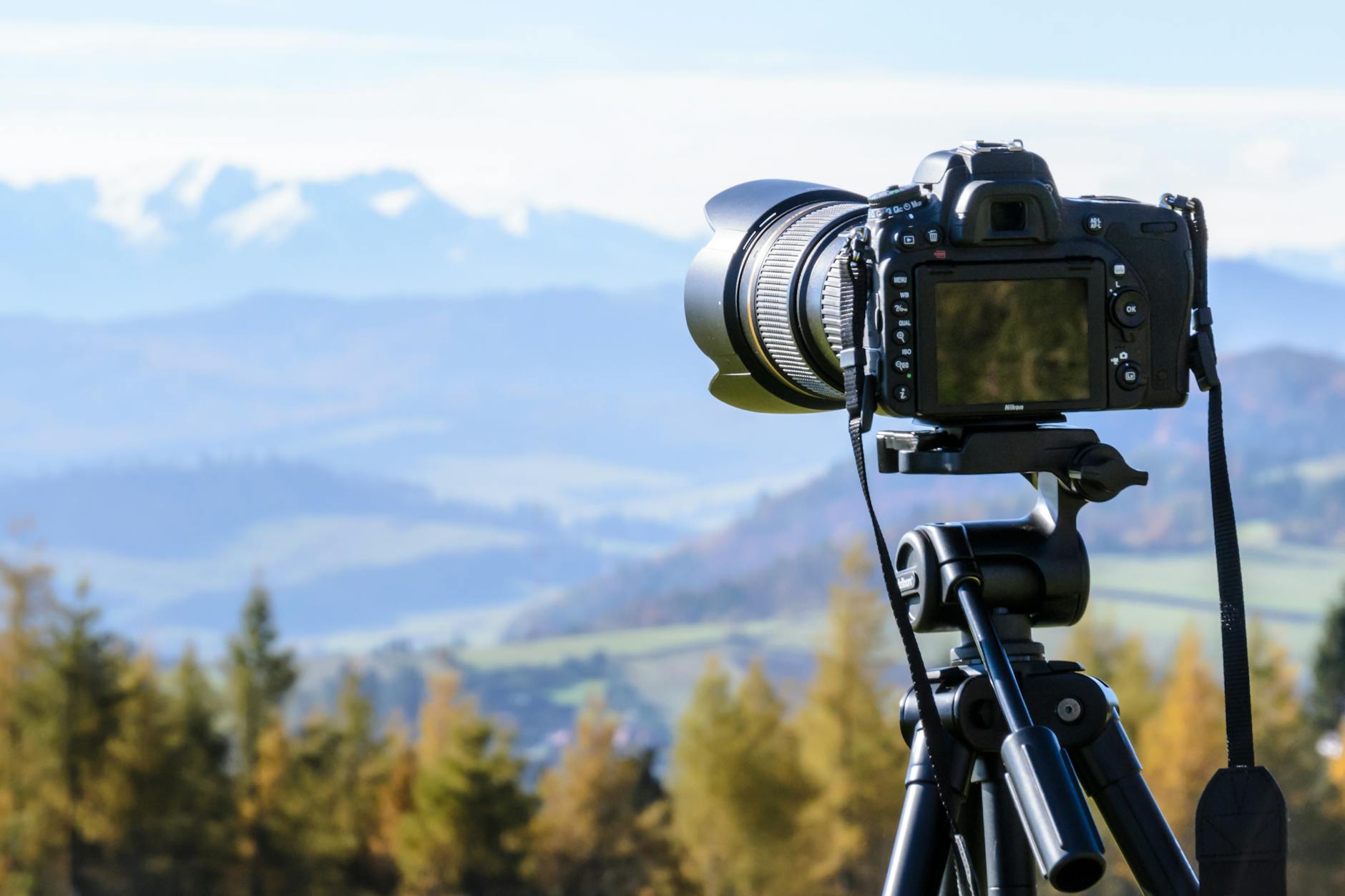
Photography A-Z
Let’s see how much camera vocabulary I can fit into the alphabet. Photography A-Z is a fun exercise and post to test knowledge, feel free to do your own and tag me! The answer is way too much so I have cut it down to the basic words and their meanings. I do reach a little with X and Y, fall flat at Q and make interesting choices all over.
What words would you have chosen in your photog alphabet? Leave me a comment below!

Photo by PhotoMIX Company on Pexels.com A
Aperture
The opening in the camera lens, that controls how much light enters the camera and how much of your image will be in focus.Aspect Ratio
The proportional difference between width and height. Typically 35mm film is 3:2.Av
Aperture Priority setting on a DSLR, sometimes written as AB
Bokeh
This is a technique using the aperture setting to create deliberate out-of-focus parts. Known to describe the quality of the out-of-focus parts. Learn how to do it here!Bracketing
This is where several shots are taken in short succession with various settings of the same subject. Usually, this is different shutters or apertures to create dynamic images.C
Crop Sensor
If you have a crop sensor camera, it means that the digital sensor is smaller than a full frame. The photos will be more zoomed in than images taken at the same focal length in a full frame.Canon
A brand that makes camera apparel.D
Depth of Field
Relates to the focus of the aperture.DSLR
Digital Single Lens Reflex. What most digital cameras with a mirror in are referred to as.Dynamic Range
The ratio between the largest and smallest values that a certain quantity can assume, such as light and dark, white and black.E
Exposure
How bright or dark an image is, refers to the combination of Aperture, Shutterspeed, and ISO.F
Filters
Used on the end of a lens to add effects or help with certain photography techniques.Flash
An external light source is used to add fullness and depth to a subject or assist in lighting.Focal Length
The distance is measured in millimeters (mm) between the optical centre of the lens and the sensor of the camera when it is focused at infinity.F-stop
This is what Aperture is measured inFull frame
Digital equivalent of the standard film size of 35mm.G
Grain
Originally grain was added during the developing process of the film with the silver solution, now an effect that can be added in editing.Golden Ratio
Refers to a composition guide to make a picture desirable. It is a mathematical ratio – two quantities are in the golden ratio if their ratio is the same as the ratio of their sum to the larger of the two quantities.H
HDR
High Dynamic Range. This can be achieved when using bracketing high and low values together.Histogram
A graph tool that shows tonal and exposure distrubution of pixels in an image.I
ISO
The sensitivity of the digital sensorJ
JPEG
A file format of high compression that can be used to store images.K
Kelvin
The temperature measurement light is measured within the White Balance.L
Leica
A brand of lenses that are perfect for mirrorless 4:3.Lumix
A brand under Panasonic that creates camera apparel.M
Macro
Close-up photography of subjects that make them larger than life-size.Half way there of the Photography A-Z!
N
Nikon
A brand that makes camera apparel.Noise
Distortions in an image made up of small dotsND
Neutral Density filters can be used in long-exposure photography, as well as in HDR bracketing.O
Optical body
This is what a camera lens is.P
Prime Lens
A lens with a fixed focal length. Common Prime lenses are 50mm, 85mm, and 400mm.Q
The Impossible letter – I have nothing for this one sorry!
R
RAW files
A file type that most photographers shoot in. It allows a large storage of data without losing quality in compression.Rule of Thirds
Read more about this rule here!S
Shutterspeed
How fast the shutter of the camera opens and closes to capture an image. This is measured in fractions of seconds.T
Telephoto
The name for a lens with a longer focal length.Tripod
An essential piece of kit for photographers who want to avoid hand shake in long exposure or portraits.Tv
The short setting for shutter speed priority is also written as S on some cameras.U
UV filter
A filter used to protect lenses from the sun. This doesn’t change an image at all, just protects your lens!V
Videography
Not photography… A recording of moving visual images, it uses the same base principles as photography with addition of movement and sound.W
White Balance
White balance is the camera setting that adjusts how colors are rendered in an image. This is measured in Kelvin (K). A camera has inbuilt presets for white balance. Represented by clouds, shade, sunshine, and interior light.X
X-offset
This one is reaching. When editing an image in post-production, you can use the vertical and horizontal axis of the image to fix distortion. The X-offset refers to the horizontal rotation of the x-axis.Y
Y – offset
Like the X-offset the Y-offset refers to the rotation axis to fix the distortion of an image in post-production.
Z
Zoom lens
The name some people call a telephoto lens with variable focal lengths.26 letters later and we made it! If you want to read more about basic photography, feel free to browse my photography tips here!
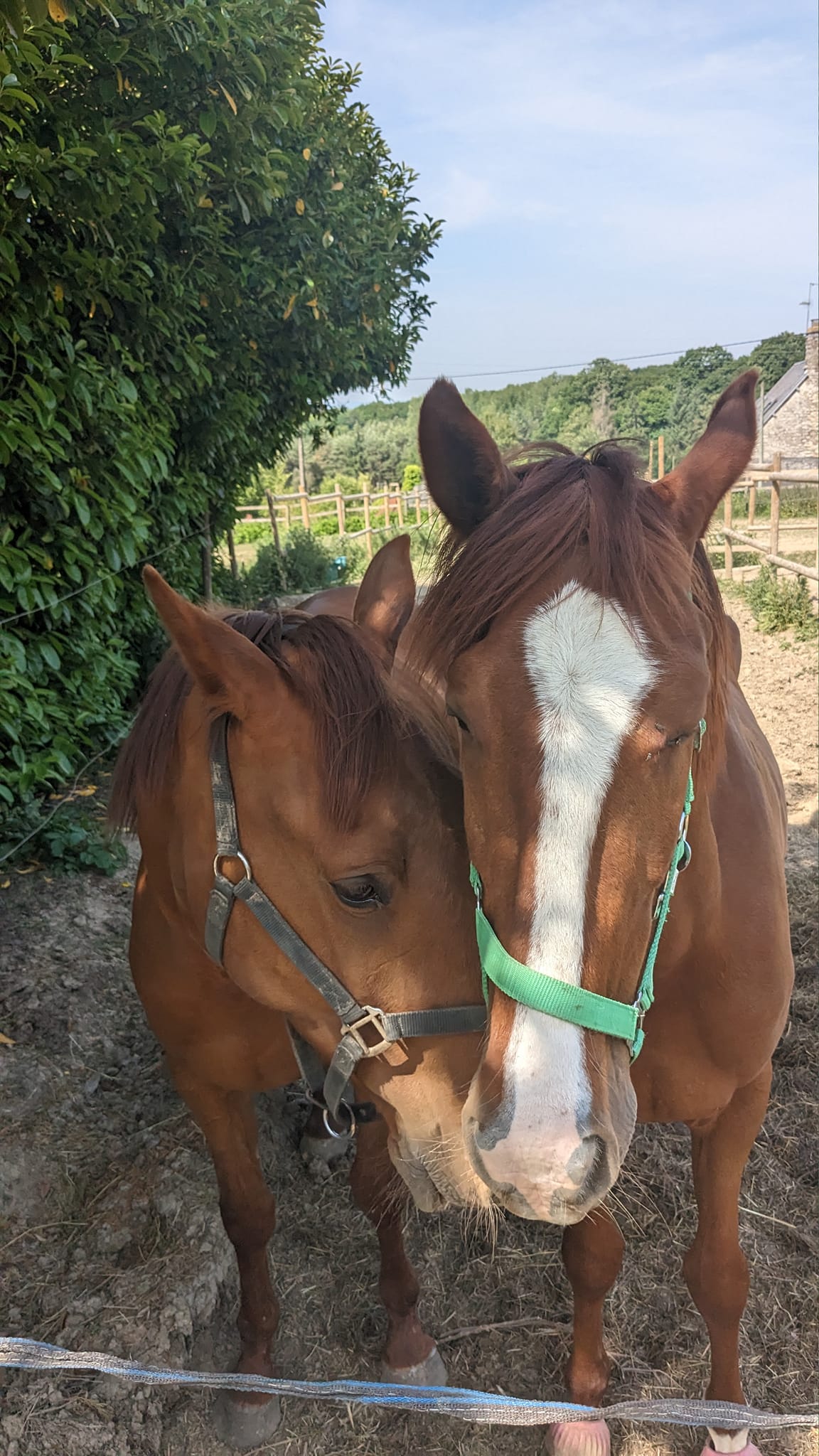
A Guide to Keeping Horses in France
Keeping Horses in France may seem daunting at first, but it need not be!
It’s about time I share with you one of my huge 2020 moments…
2020 was not too kind to people both physically and mentally, and I made the decision to adopt two young French Trotters, bringing horses back into my life. There have been ups and down in the process of owning horses in France and I have learned so much along the way and now feel confident enough to share with you all (the internet) things I wish I knew when I first brought the boys home.Luckily for me, Normandy is horse country, and keeping a horse here is not as difficult as it may seem. So let me introduce you to 2/4 of my horses!
This post will also mention finding a good vet, Farriers in France, and Livery vs Home Stabling!
(more…)

